This post may contain affiliate links. Please read our disclosure policy.
Tzatziki sauce is a creamy, flavorful Greek yogurt sauce that’s incredibly versatile. It’s perfect as a dip, spread, or sauce, and it comes together quickly with simple ingredients. This small batch recipe yields about one cup, making it perfect for those who don’t want a lot of leftovers.
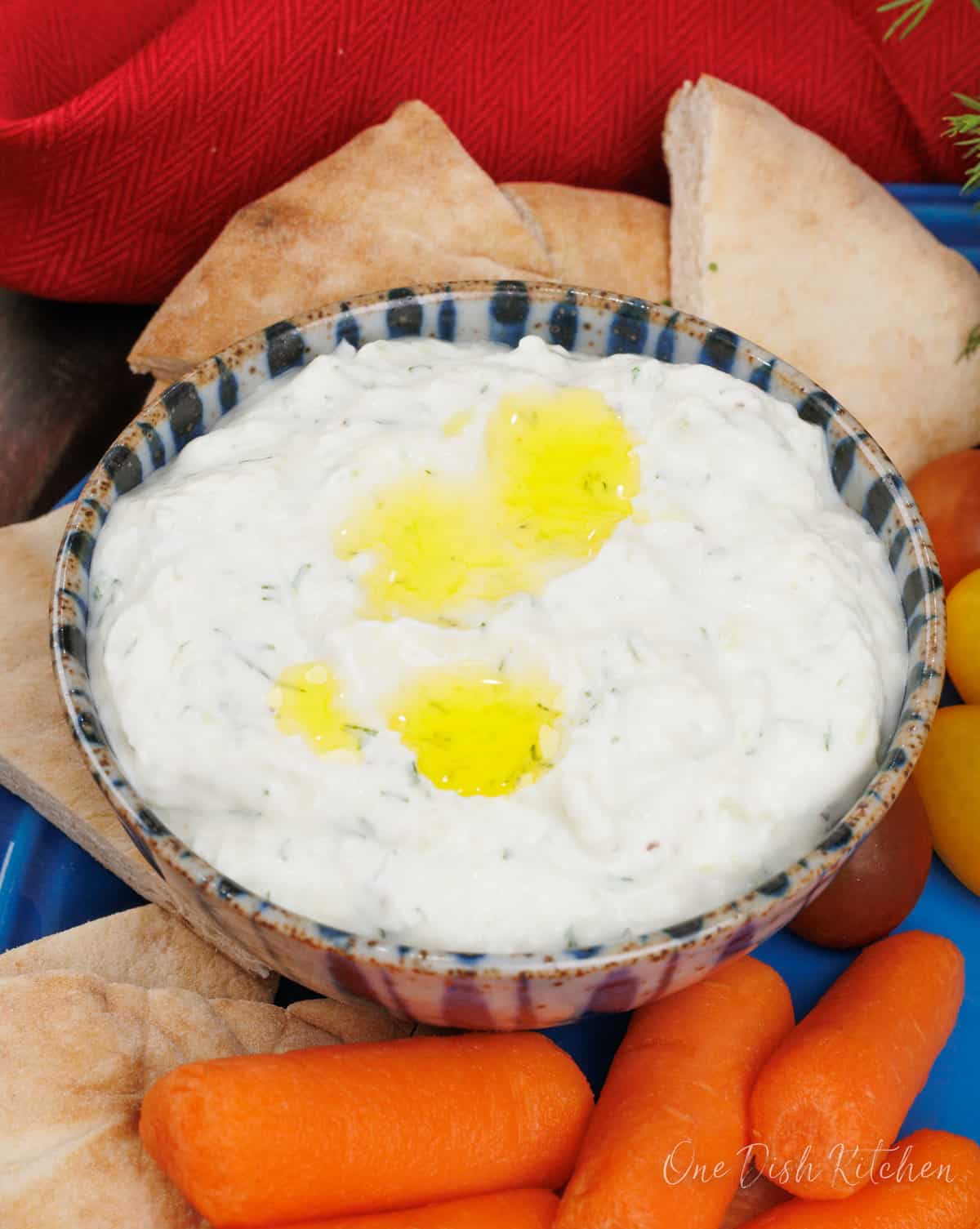
Tzatziki sauce is incredibly versatile and pairs wonderfully with juicy steak, broiled chicken, or tender fish. Enjoy it with soft naan or crispy homemade tortilla chips for a delightful snack.
Why You’ll Love This Recipe
- Quick and Easy: This tzatziki sauce comes together in just a few minutes, perfect for when you’re short on time.
- Versatile: Use it as a dip, spread, or sauce. It pairs well with many dishes.
- Simple Ingredients: No fancy ingredients required. You probably already have most of them in your kitchen.
- Healthy: Made with Greek yogurt, this sauce is low in fat and calories but still rich and creamy.
- Perfect Portion: This small batch recipe is ideal for one person, so you don’t have to worry about leftovers.
What Is Tzatziki Sauce?
Tzatziki is a creamy, yogurt-based sauce made with Greek yogurt, cucumber, garlic, olive oil, lemon juice, fresh herbs, and salt. Originating in Greece, it’s popular throughout the Mediterranean. Often served as an appetizer or alongside roasted meats and vegetables, tzatziki is a versatile and delicious condiment. This small batch version is perfect for those who don’t need a large quantity. It’s rich, flavorful, and made with simple, healthy ingredients you probably already have in your kitchen.
Tzatziki sauce has a mild, refreshing flavor thanks to the fresh dill and cucumber. It’s creamy, slightly tangy, and garlicky. You can easily tweak the ingredients to suit your taste. Some recipes add mint and parsley for a stronger herb flavor, so feel free to experiment and make it your own.
Ingredients
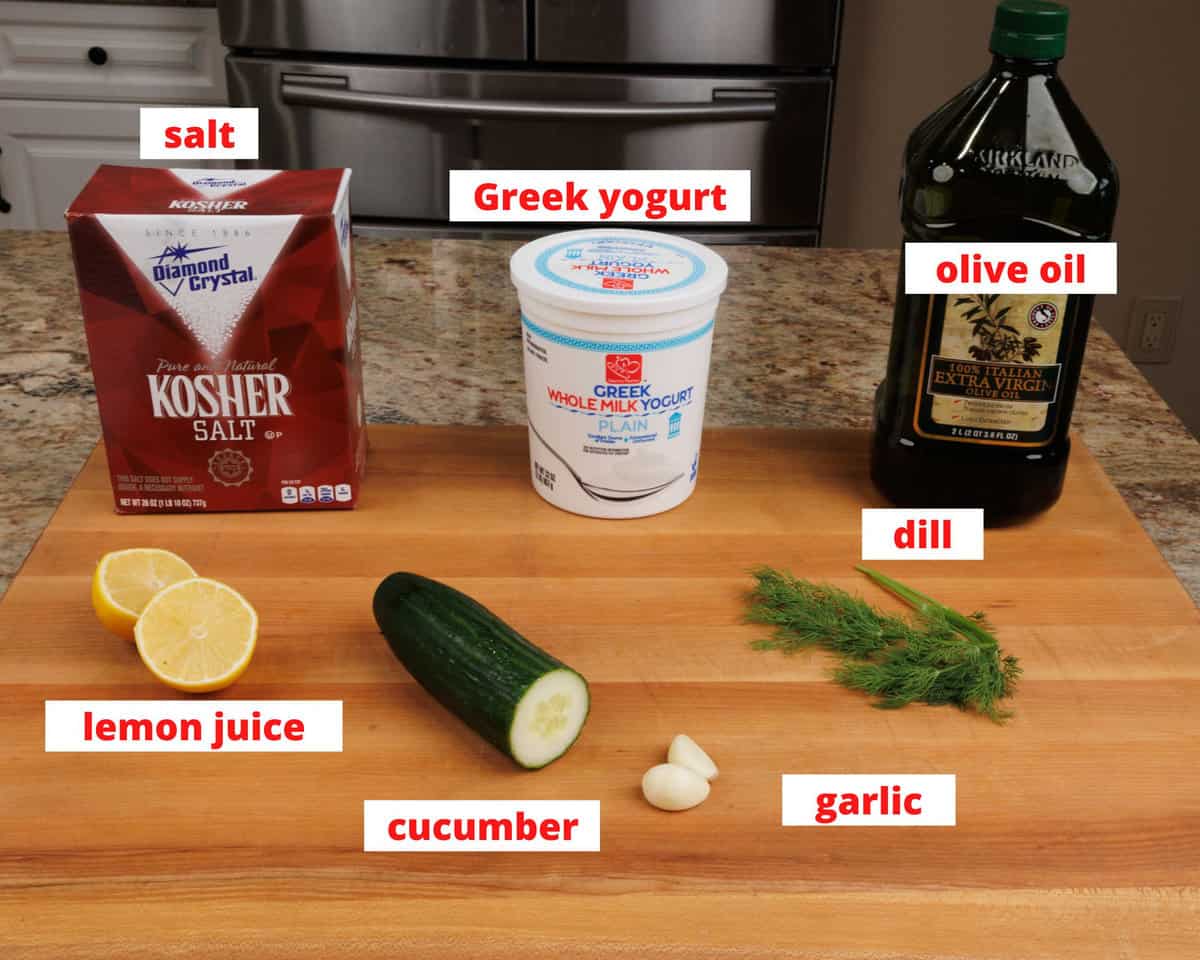
If you have any ingredients leftover from this small batch tzatziki sauce recipe, check out our Leftover Ingredients Recipe Finder.
- English Cucumber: I prefer using an English cucumber because it’s mostly seedless. Regular cucumbers have large seeds that can make the sauce runny. You can peel or leave the skin on, depending on your preference. Consider using any leftover cucumber in Tabbouleh, a Cucumber Salad or a Salmon Rice Bowl.
- Garlic: I use 2 cloves for a strong garlic flavor. If you prefer a milder taste, start with 1 clove and add more if needed.
- Lemon Juice: Fresh lemon juice is best, even in small amounts. It adds a noticeable difference in flavor. Save any leftover lemon to add to water or use in other recipes.
- Olive Oil: Extra virgin olive oil is my go-to because it’s the least processed and has a true olive taste, along with more vitamins and minerals. You can use light olive oil if you prefer.
- Plain Greek Yogurt: Use plain full-fat Greek yogurt for the right consistency. Regular plain yogurt will make the sauce too runny. If you’ve got extra yogurt, use it in Chicken Tikka Masala, Shrimp Tacos, or Beef Stroganoff.
- Salt: I add 1/8 teaspoon of salt, but feel free to taste and add more if needed.
- Dill: Fresh dill is ideal. If you can’t find it, fresh mint or basil can be used for a different but still delicious flavor. Any extra dill can be used in Potato Salad.
What Is An English Cucumber?
English cucumbers, also known as seedless, greenhouse, hothouse, or European cucumbers, are long, thin cucumbers that are typically sold covered in plastic. They have a thinner skin compared to regular cucumbers, which is why they’re wrapped in plastic, and they taste sweeter.
When choosing an English cucumber, look for one that feels firm. Store it in the produce drawer of your refrigerator with the plastic wrap on. It will stay fresh for about a week.
In the photo below, you can see the difference between a standard cucumber and an English cucumber.
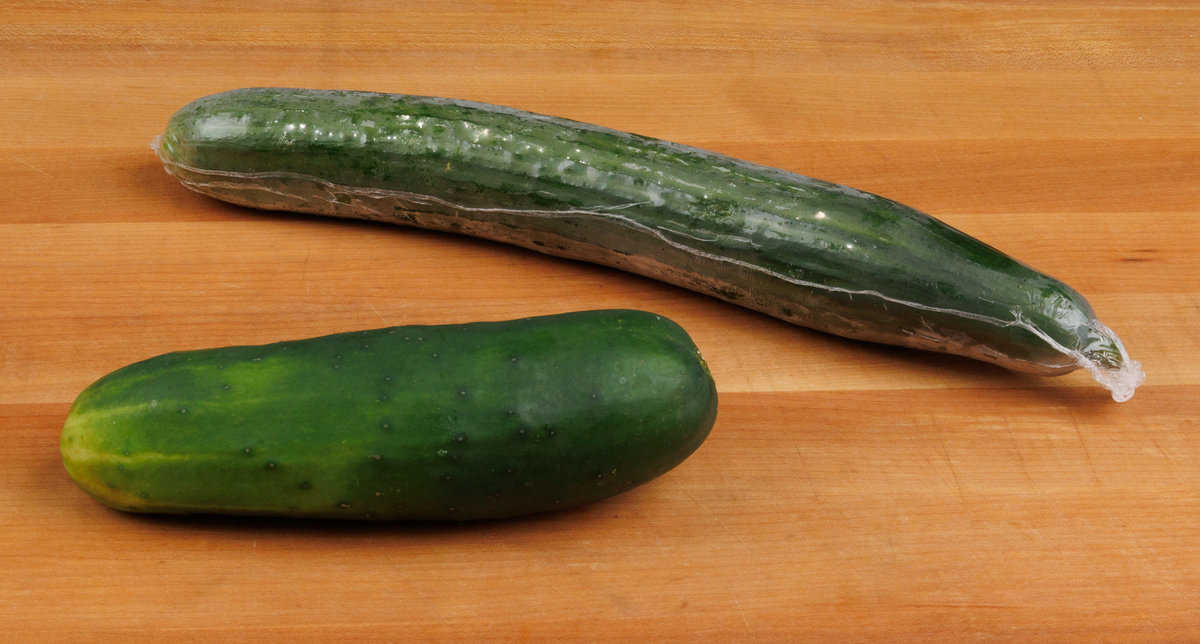
Recipe Variations
There are many ways to customize tzatziki sauce to suit your taste:
- Spicy Tzatziki: Add a pinch of cayenne pepper or chopped jalapeños for some heat.
- Mint Tzatziki: Add fresh mint along with or instead of dill for a refreshing twist.
- Avocado Tzatziki: Mix in mashed avocado for an extra creamy and unique flavor.
- Herbed Tzatziki: Use a mix of fresh herbs like parsley, cilantro, or mint for added flavor.
- Lemon Tzatziki: Add extra lemon juice and zest for a more citrusy taste.
How To Make Tzatziki Sauce
These step-by-step photos and instructions help you visualize how to make a small batch of tzatziki sauce. See the recipe box below for ingredient amounts and full recipe instructions.
- Grate the Cucumber: Use a food processor or box grater to grate or finely chop the cucumber.
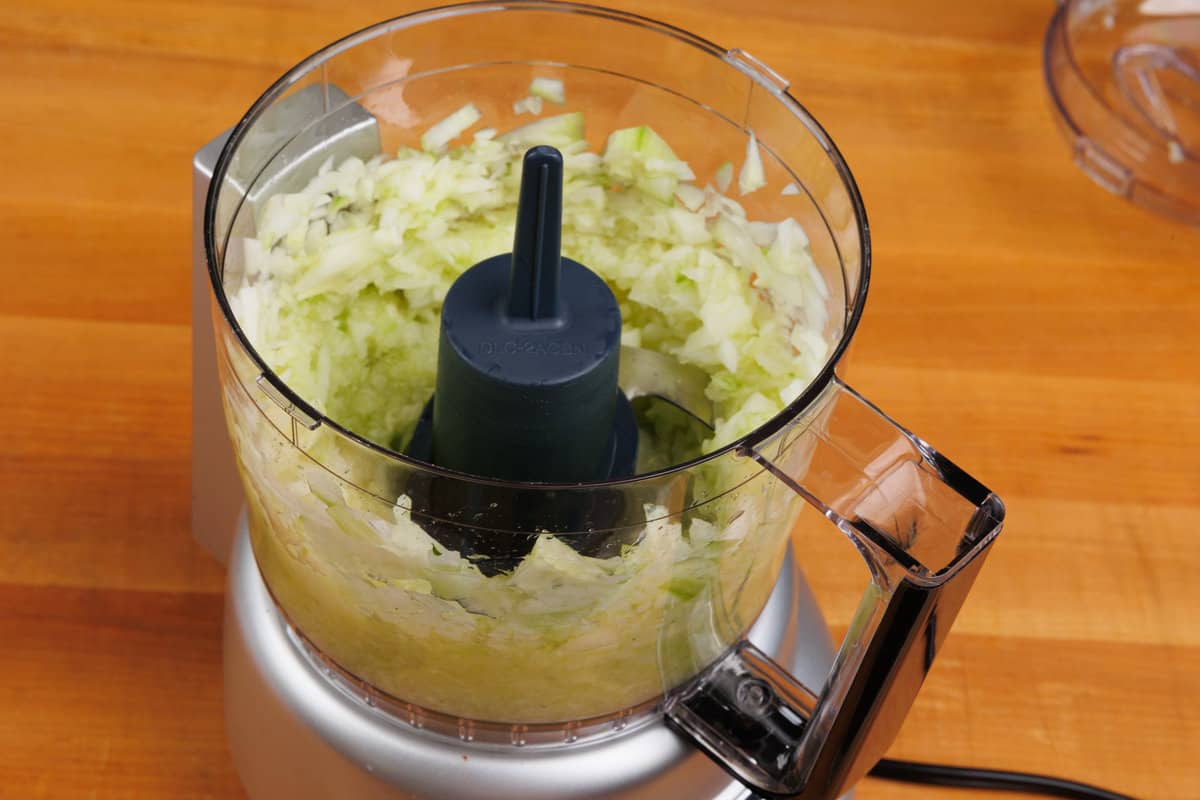
- Remove Excess Moisture: Sprinkle the grated cucumber with salt and place it in a thick, lint-free dish towel or clean cheesecloth. Gather the edges to form a bundle and squeeze out as much moisture as possible.
Pro Tip: This step is crucial because cucumbers contain a lot of water. When mixed with yogurt and lemon juice, the cucumber releases moisture, making the sauce watery.
Personal Note: I like to save the cucumber juice to add to lemonade, water, or cocktails.
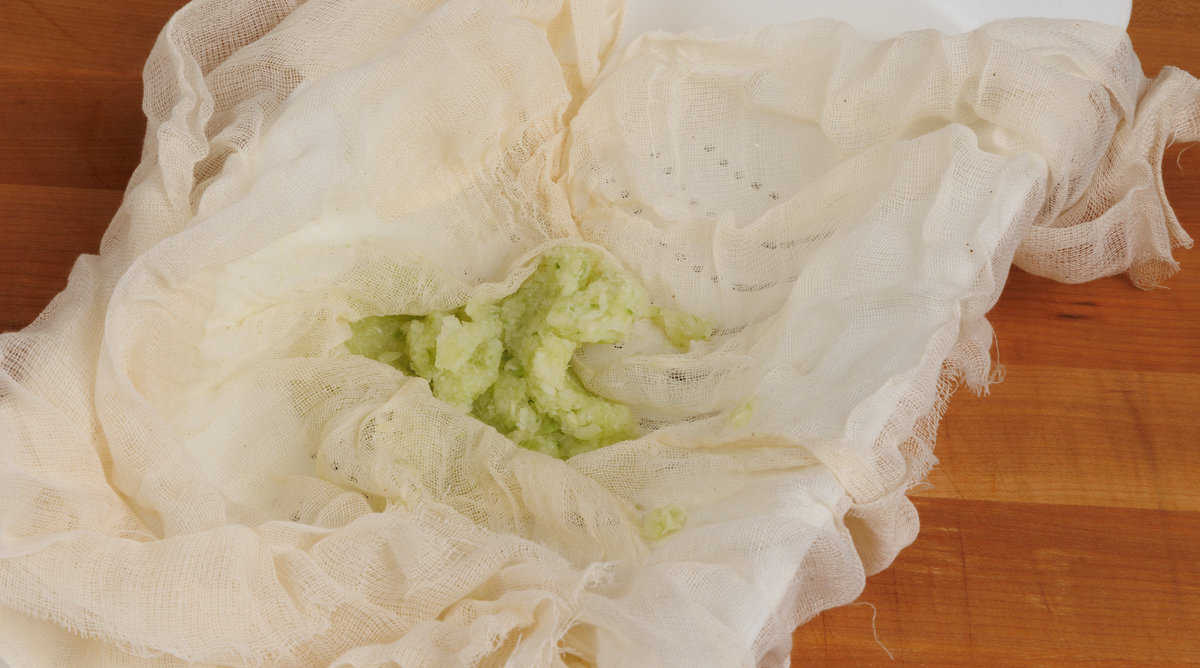
- Rest and Mix: Let the grated cucumber rest for a few minutes to release more moisture. Meanwhile, in a medium-sized bowl, mix the grated garlic, lemon juice, olive oil, Greek yogurt, and chopped dill.
Pro Tip: Use a fine grater or the small side of a box grater to grate the garlic.
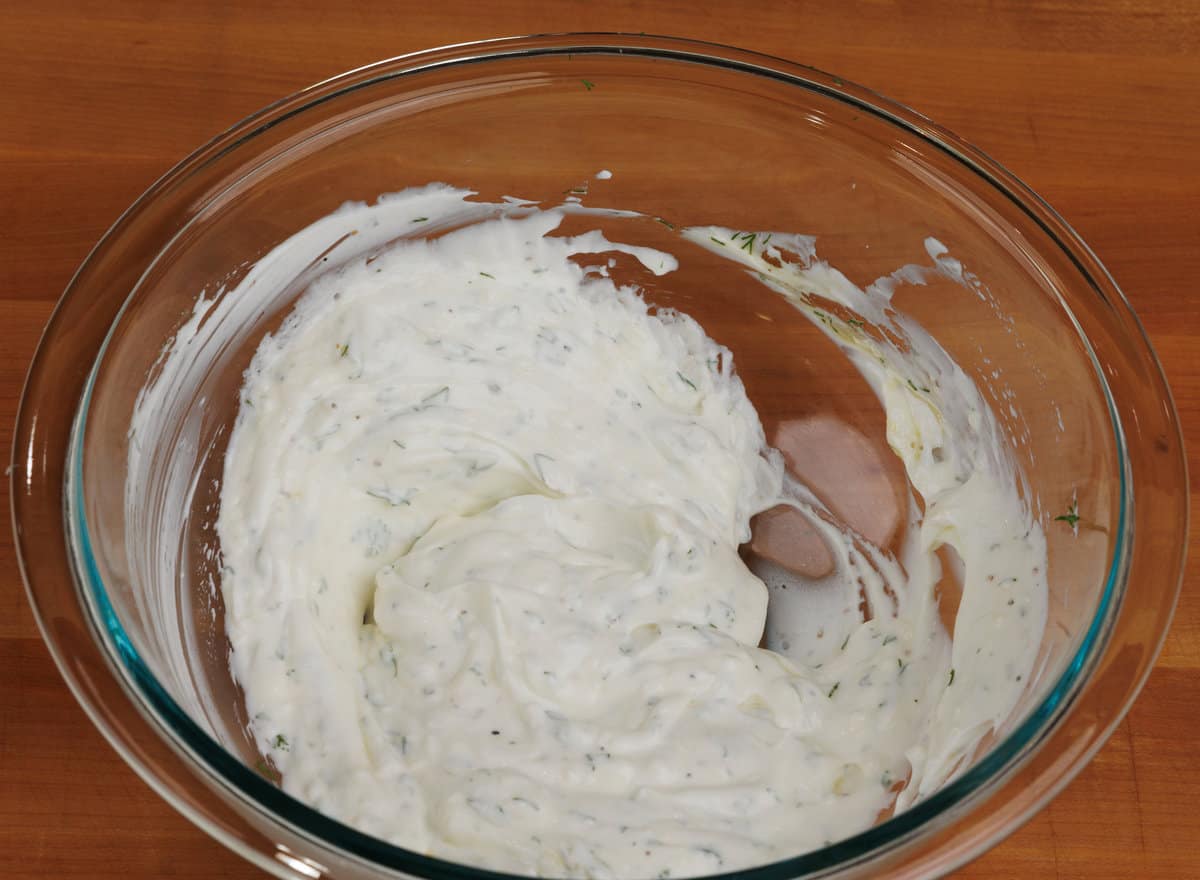
- Combine: Stir the grated cucumber into the yogurt mixture.
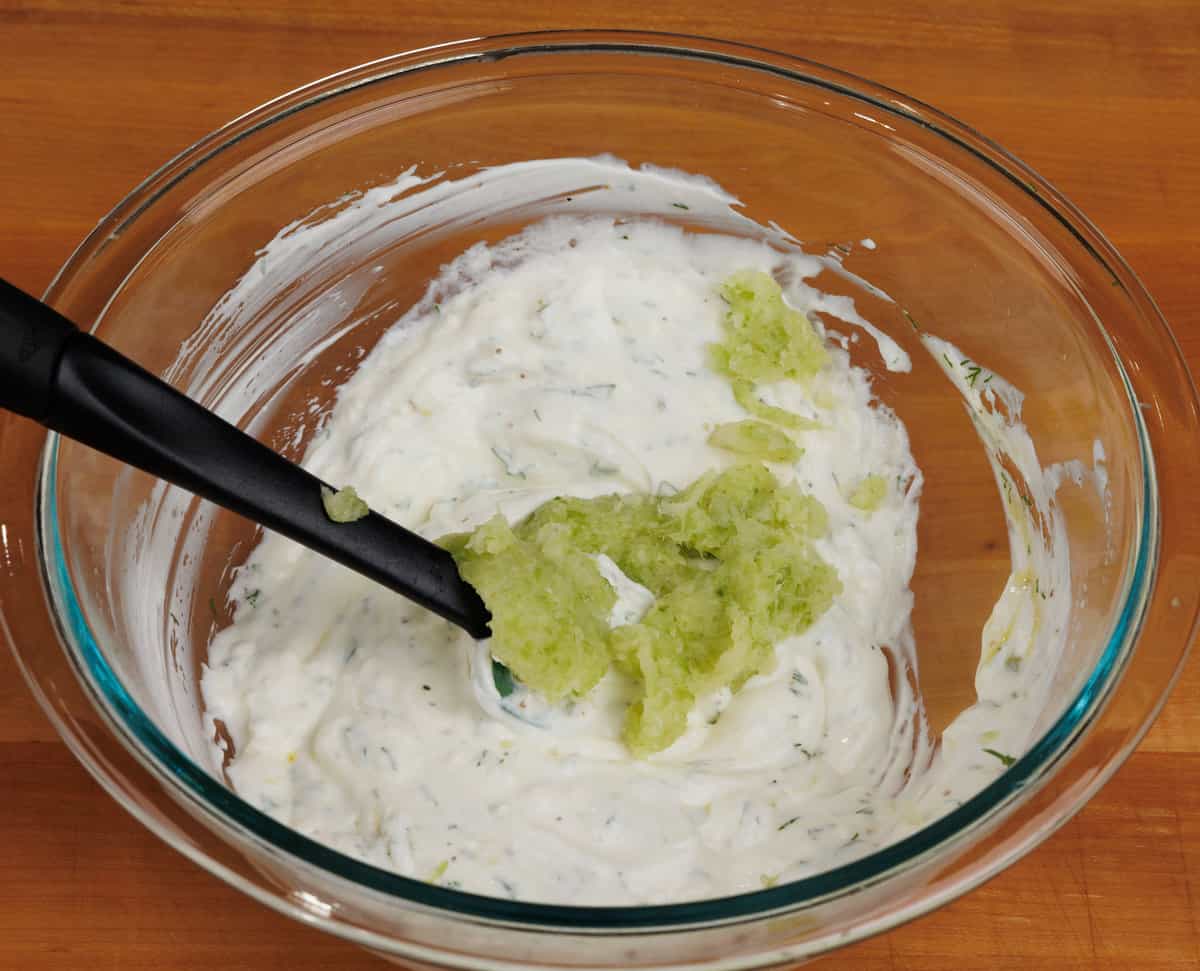
- Enjoy the tzatziki immediately or chill it for later.
Pro Tip: Drizzle a bit of olive oil on top before eating for extra flavor.
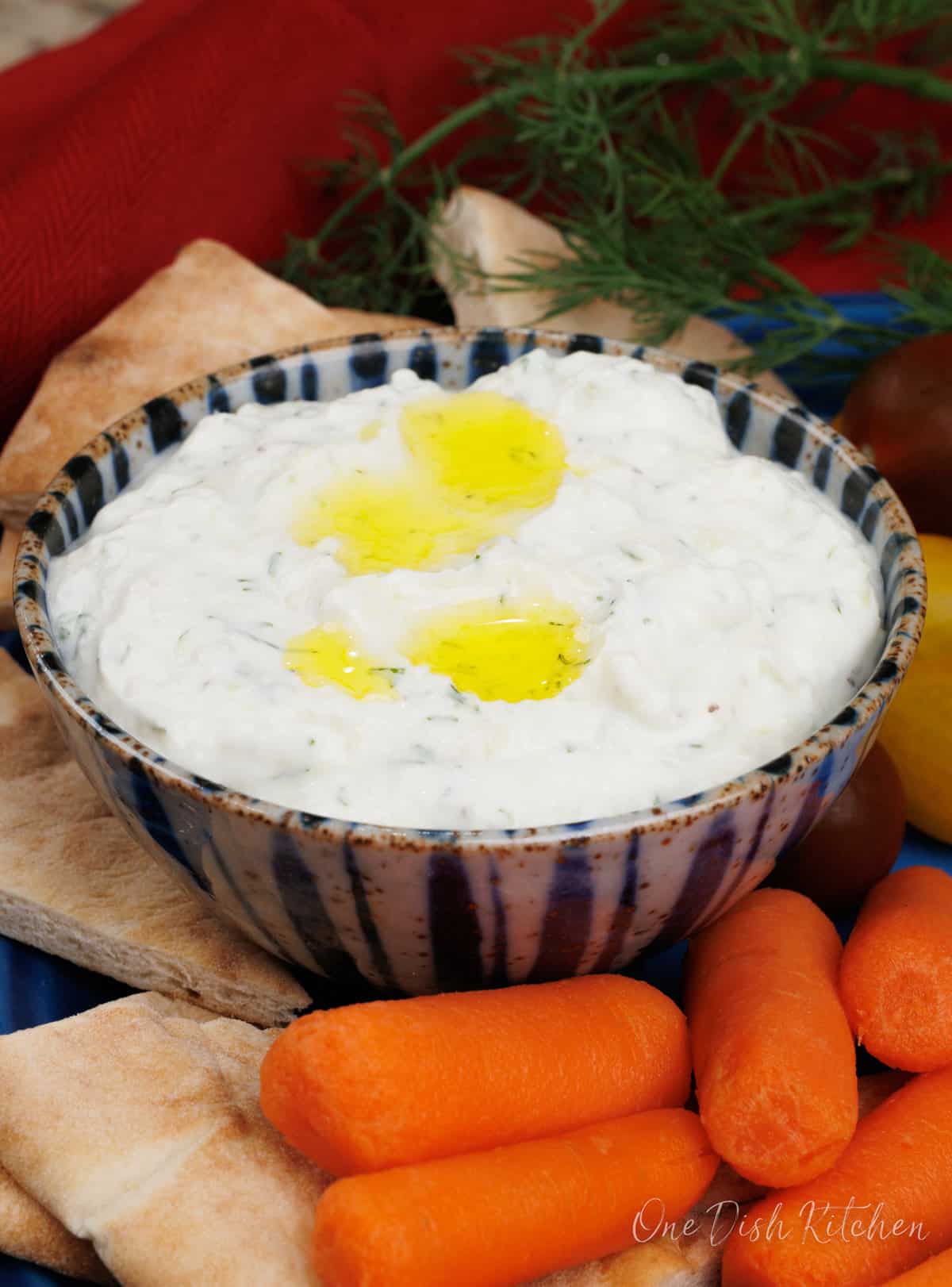
Expert Tips
- Drain the cucumber: Ensure you thoroughly drain your cucumber before mixing it with the yogurt. This step is crucial for achieving the right consistency.
- Adjust consistency:
- For a thinner tzatziki, increase the amount of yogurt.
- For a thicker tzatziki, decrease the yogurt or add a bit more olive oil.
- Choose the right dill:
- Fresh dill is best for the most vibrant flavor.
- If using dried dill, limit it to about 1/4 teaspoon.
- Refrigeration: Allow the tzatziki to sit in the refrigerator for about an hour before serving to let the flavors blend beautifully.
- Taste before serving: Always taste the tzatziki before it hits the table to adjust seasonings to your liking.
- Garlic preference:
- This sauce is garlic-heavy. I typically use two cloves of garlic for a strong flavor.
- If you’re unsure about the garlic level, start with one clove and add more if needed after tasting.
Frequently Asked Questions
Yes, tzatziki sauce can be made a day in advance and stored in the refrigerator.
It will keep for about 3-4 days in an airtight container in the fridge.
Freezing isn’t recommended as the texture changes when thawed.
If your tzatziki sauce turns out watery, it’s probably because the grated cucumbers still had too much water in them. Make sure to thoroughly squeeze out the water from the cucumbers before using them in your sauce. This step is crucial for achieving the perfect consistency.
Yes, you can make tzatziki without cucumbers. For a cucumber-free version, mix Greek yogurt with minced garlic, lemon juice, olive oil, a quarter teaspoon of dried dill (or two teaspoons of fresh chopped dill), a quarter teaspoon of dried parsley (or two teaspoons of fresh chopped parsley), and salt to taste.
Absolutely! If you need more tzatziki, simply double all the ingredients listed in the recipe.
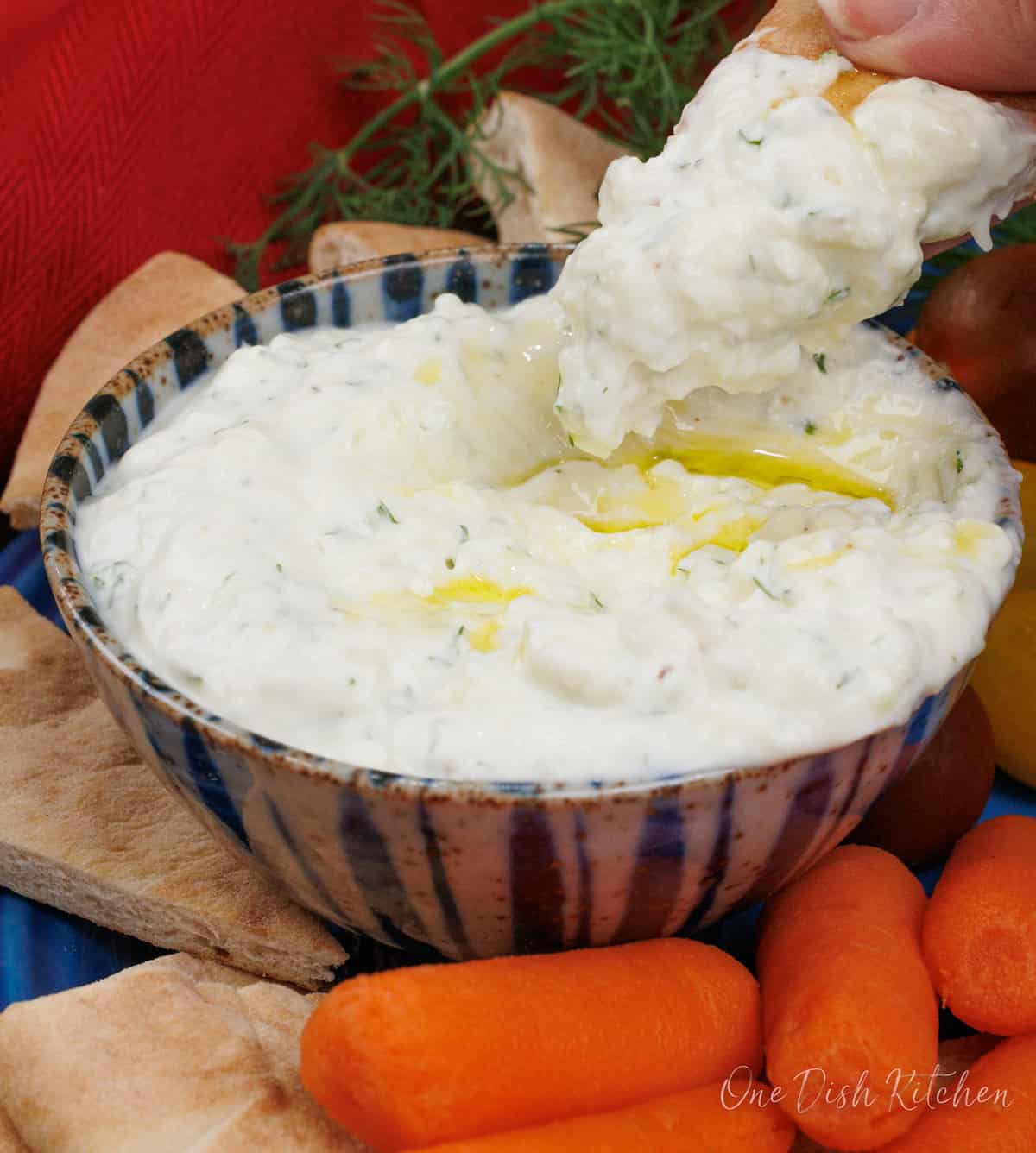
Ways To Use Leftover Ingredients
If you have any ingredients leftover from this recipe, check out our Leftover Ingredients Recipe Finder or you might like to consider using them in any of these single serving and small batch recipes:
If you’ve tried this easy tzatziki sauce recipe or any recipe on One Dish Kitchen please let me know how you liked it by rating the recipe and telling me about it in the comment section below.
If you take a picture please tag us on Instagram (@onedishkitchen) we’d love to see it!
Small Batch Tzatziki Sauce
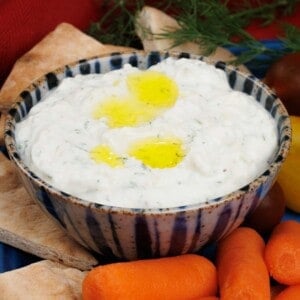
Equipment
- mini food processor or box grater
Ingredients
- ½ English cucumber (6 ounces) – peeled and sliced
- ⅛ teaspoon kosher salt
- 1-2 cloves garlic -finely grated or minced (start by using 1 garlic clove if you don't want you sauce to be too strong)
- ½ teaspoon lemon juice
- ½ tablespoon olive oil
- 1 cup plain Greek yogurt
- 2 teaspoons chopped dill
Instructions
- Grate the Cucumber: Use a food processor or box grater to grate or finely chop the cucumber.
- Remove Excess Moisture: Sprinkle the grated cucumber with salt and place it in a thick, lint-free dish towel or clean cheesecloth. Gather the edges to form a bundle and squeeze out as much moisture as possible. Note: Cucumbers have a lot of water, which can make the sauce watery.
- Rest and Mix: Let the grated cucumber rest for a few minutes to release more moisture. Meanwhile, in a medium-sized bowl, mix the grated garlic, lemon juice, olive oil, Greek yogurt, and chopped dill. Tip: Use a fine grater or the small side of a box grater to grate the garlic.
- Combine: Stir the grated cucumber into the yogurt mixture.
- Serve: Enjoy the tzatziki immediately or chill it for later. Tip: Drizzle a bit of olive oil on top before eating for extra flavor.
Notes
- Drain the cucumber: Ensure you thoroughly drain your cucumber before mixing it with the yogurt. This step is crucial for achieving the right consistency.
- Adjust consistency:
- For a thinner tzatziki, increase the amount of yogurt.
- For a thicker tzatziki, decrease the yogurt or add a bit more olive oil.
- Choose the right dill:
- Fresh dill is best for the most vibrant flavor.
- If using dried dill, limit it to about 1/4 teaspoon.
- Refrigeration: Allow the tzatziki to sit in the refrigerator for about an hour before serving to let the flavors blend beautifully.
- Taste before serving: Always taste the tzatziki before it hits the table to adjust seasonings to your liking.
- Garlic preference:
- This sauce is garlic-heavy. I typically use two cloves of garlic for a strong flavor.
- If you’re unsure about the garlic level, start with one clove and add more if needed after tasting.
Nutrition
The information shown is an estimate provided by an online nutrition calculator. It should not be considered a substitute for a professional nutritionist’s advice.
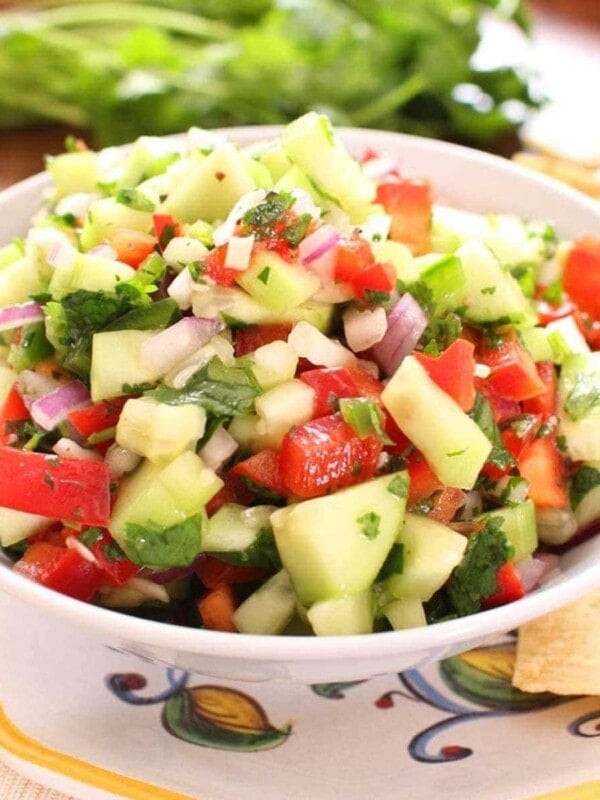


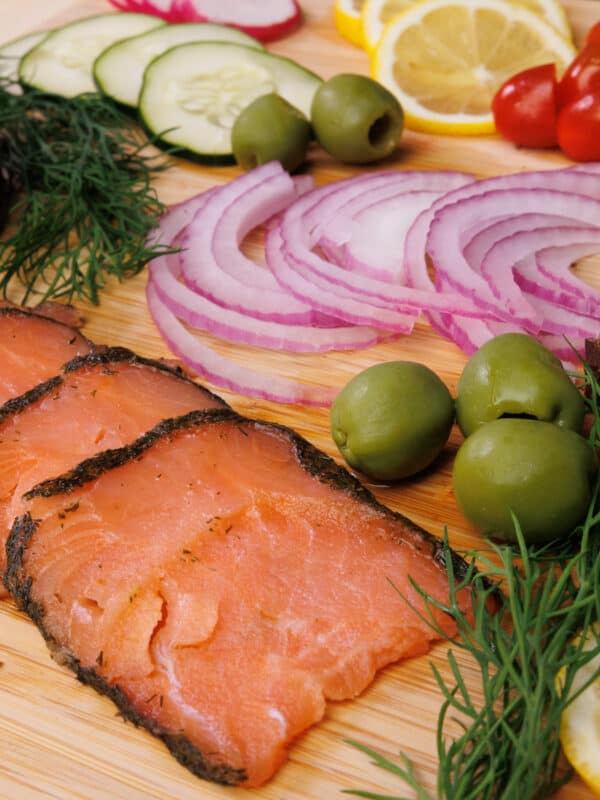


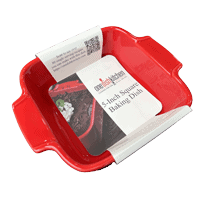









Good recipe! I doubled the salt after tasting it. Excited to use as a healthy bagel spread for my breakfasts!
Great recipe.